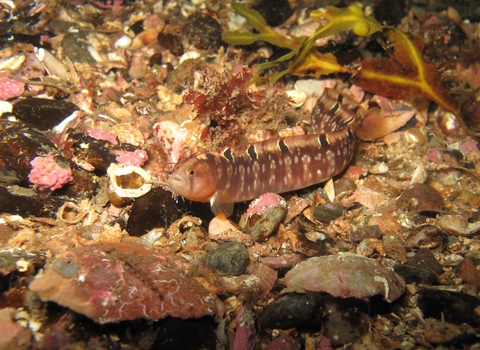
Butterfish ©Polly Whyte/Earth in Focus
Butterfish
The slippery butterfish is a common sight in rockpools all around the UK. Look out for the distinctive black spots on their backs that look a lot like eyes!
Enw gwyddonol
Pholis gunnellusPryd i'w gweld
January to DecemberGwybodaeth am rywogaethau
Ystadegau
Length: up to 25cmCommon
